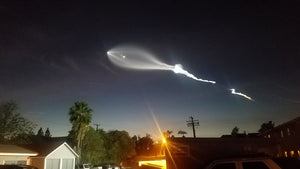October Sky- Uranus nears Pleiades, Owl Nebula and Orionid Meteor Shower
Uranus nears the Pleiades
Uranus takes 84 years to circle the Sun. For most of us, that means one chance—just one—to watch it drift past the legendary Pleiades. And this year, that rare cosmic pairing reaches its best visibility in the window from late October through early November 2025, with October 30 marking the optimal night. From mid-April 2025 to mid-August 2026, Uranus and the Seven Sisters share the same 10x50 binocular field, and again from mid-October 2026 through late May 2027—but this autumn night is your prime opportunity.
Earlier, on July 15th, Uranus and the Pleiades were separated by 4° 15′ 46.3″, but the Sun’s glare made the view impossible. On October 30, the separation is only slightly wider—4° 15′ 48.3″—and the Sun has moved far enough to reveal both wonders in the same frame.
Next May, they’ll appear even closer—4° 13′ 6.6″ apart—but with the Sun only 19° away, observation will again be extremely difficult.
So grab your binoculars, step outside, and look up. In a single view, you’ll witness a distant ice world drifting past a cluster of ancient stars—two celestial neighbors sharing the same sky, fleeting, rare, and unforgettable.
NGC 457 – The Owl Cluster
NGC 457, affectionately known as the Owl Cluster, is a stunning open cluster that delights both amateur astronomers and astrophotographers. Even at low magnification, it reveals one of its most striking features: Phi Cassiopeiae, a bright double star that forms the owl’s piercing eyes. Surrounding this stellar gaze, dozens of fainter stars stretch outward, tracing the bird’s body and broad, outstretched wings. The stars are most densely packed in the chest region, giving the cluster a vivid, compact core that draws the eye immediately.
As you increase magnification or photograph the cluster, more of the subtle stars emerge, giving the owl’s figure surprising depth and intricacy. Against a dark, crisp sky, the Owl Cluster almost seems to perch in space, watching silently over the surrounding cosmos. NGC 457 is a perfect example of how even small telescopes can reveal nature’s artistry in the night sky, combining structure, symmetry, and a touch of cosmic whimsy in a single, unforgettable sight.
The Orionid Meteor Shower
On the night of October 21st, the sky hosts a quiet, eerie spectacle as the Orionid Meteor Shower reaches its peak. Though not as intense as the Perseids or Geminids, the Orionids can produce up to 20 meteors per hour under ideal, dark-sky conditions. This year, a new Moon leaves the sky dark, perfect for spotting the fleeting streaks of light. These meteors are fragments of Halley’s Comet, drifting silently through space and burning bright as they enter Earth’s atmosphere. Radiating from the constellation Orion, the meteors can appear anywhere in the sky. Find a clear, unobstructed horizon, watch patiently, and you may see the ghostly fire of these cosmic travelers streak across the night, a haunting yet beautiful celestial dance.







